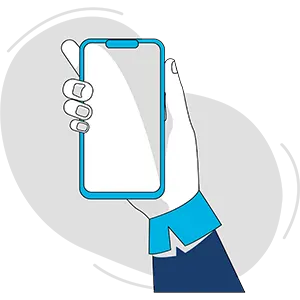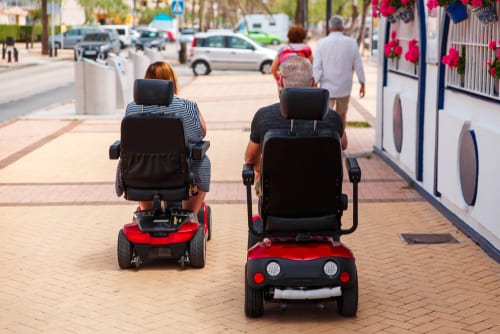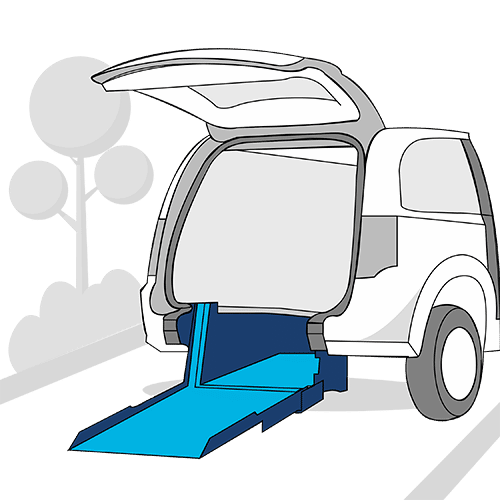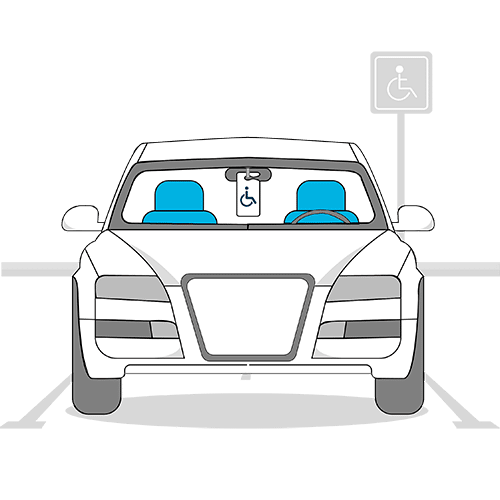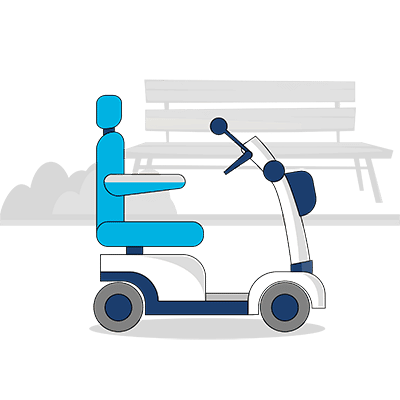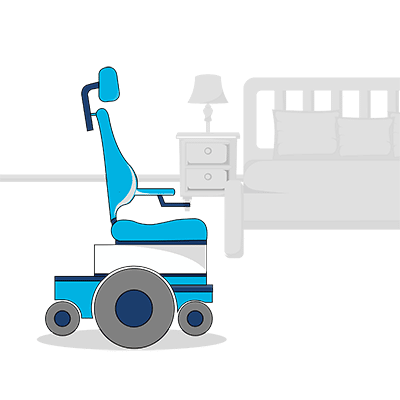Recent estimates suggest more than 230,000 Australians use a mobility scooter. Further, 4.4% of the 4 million+ Australians with a disability use a wheelchair. That’s over 400,000 people in total. So, the rules around the use of this type of mobility equipment – technically called motorised mobility devices (MMDs) – is a must-know for many. Read on… This post explores their upcoming regulation of motorised mobility devices.
Legally binding regulation doesn’t exist yet and most people involved in the disability sector agree it’s well overdue. Why? Rules and regs everyone can understand and adhere to is crucial for the safe use of this equipment. It should also assist with an increased acceptance of its role in society. Users will benefit greatly, as will those they encounter such as pedestrians and motorists.
Where it’s at
Any legally binding national regulation of motorised mobility devices is likely to have the existing Technical Specification for MMDs at its heart. Currently, this is only a voluntary guideline for the industry.
The Technical Specification sets out construction and performance requirements for motorised mobility devices for use on public infrastructure, such as footpaths, and public transport.
This includes:
- maximum unladen mass (170kg for scooters, no limit for powered wheelchairs)
- speed limits (6km/hour for slow speed setting and maximum speed of 10km/hour)
- width, height and length dimensions
- parameters around stability on gradients and braking performance
Who’s involved
Did you know that Assistive Technologies Australia (ATSA) has been working closely with government bodies to establish a consistent national approach to the regulation of motorised mobility devices? Its goal is to shape policy that takes everyone’s needs into account.
Over much of this year ATSA has worked closely with Austroads and the National Transport Commission on this. Austroads is the peak organisation of state/territory and local governments’ road transport and traffic agencies. NTC is a federal body that leads national land transport reform in support of Australian governments.
Austroads has invested in projects over several years to improve the safety of motorised mobility devices, with the NTC recently becoming directly involved.
The last couple of Austroads milestones for 2019 were:
- holding national workshops with industry and government stakeholders to gather views on the best approach for the regulation of motorised mobility devices, and
- calling for comment on proposed changes via a discussion paper created from the workshops.
As for the NTC, it has initiated a project that explores regulation of innovative vehicles (including motorised mobility devices). The goal is to introduce new legislation that provides consistency and fairness. The NTC’s most recent milestone is a recently-released policy proposal paper (see here) discussing overcoming key regulatory barriers that prevent the safe access and use of motorised mobility devices.
Austroads and the NTC are working closely together on their complementary projects, with any legislative changes to be progressed by the NTC.
Why regulation of motorised mobility devices is important
Everyone’s efforts have the same aim: to improve the construction and performance of mobility scooters and wheelchairs, reducing the likelihood of accidents and other unsafe outcomes.
This is especially important for mobility scooters.
Over the 5 years from 2011–12 to 2015–2016, 4,613 people were admitted to hospital for a possible mobility scooter-related injury. Further, over the 10 years from 2006–07 to 2015–16, 69 people aged 60 and over died from a mobility scooter-related incident. Most injuries were fall-related (97%) and the rest were pedestrians injured in a collision with a mobility scooter (3%).
Most of us are aware motorised mobility devices used on paths cannot exceed a 10km per hour speed limit, or an unladen mass of 110kg. True, unless they’re used in the states/territories that allow 150kg. Differing rules in different regions of Australia is widely understood to not be ideal.
The mobility equipment market is growing and people who use these devices are now able to travel more widely (thanks to an increase in accessible travel). A consistent approach is needed.
With it will likely come some kind of labelling system. Labels would encourage motorised mobility device buyers to better understand a device’s suitability for their intended use, by noting its safety standard and capability.
There are suggestions of a white label affixed to mobility equipment that is suitable for driving on infrastructure such as pathways, and a blue label for those suitable to also be used on public transport. See label examples in the discussion paper here.
ATSA’s stance on it
ATSA’s recommended approach to national regulation of motorised mobility devices is to bring the Technical Specification under an industry-driven adoption model. This means manufacturers and suppliers would voluntarily self-certify motorised mobility devices as per the Technical Specification.
ATSA also believes it’s important to consider the market for used mobility equipment. It suggests the introduction of some kind of grandfather structuring to manage the transition into national regulation.
Further, ATSA’s opinion is that motorised scooters shouldn’t have a weight limit (as with wheelchairs). It questions why wheelchair weights are unlimited yet other motorised mobility devices are not. According to the industry body “each user’s circumstances are too individual to conform to one set of criteria”.
Your thoughts
What do you think about weight limit allowances differing between types of motorised mobility devices? What about the need for regulation of motorised mobility devices – is it important or not? Let us know your thoughts below.

